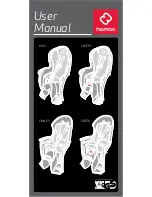
MAN-79
We generally consider three ranges of engine operation: the idle RPM or low RPM,
achievable with slightly opened throttle, the mid RPM or transition RPM,
achievable with intermediate throttle lever opening, and the max. RPM, achievable
with max. throttle opening.
In a float chamber carburettor such as this, there are different devices acting on
each specific carburetion areas; their zone of influence are separated, as below
illustrated, although affecting each other.
THE IDLE RPM
It can be adjusted by means of the screw "A" (see fig. 1), which acts on the throttle
gas by slightly lifting or lowering it. Turning clockwise to RPM increases and
turning counter-clockwise to decrease.
THE CARBURATION AT IDLE RPM
It can be set by means of:
-
the idle jet in the float chamber
-
the idle emulsion tube, above the respective jet
-
the idle mixture screw air.
Generally, for the standard adjustments, the emulsifier is not concerned. A richer
carburetion is obtainable by increasing the idle "L" jet size (see fig. 2), and leaner by
decreasing the "L" jet size. The idle jet can be reached by removing the carb. float
chamber. A richer carburetion can also be achieved even turning clockwise the air
screw "B" (see fig. 1) and, conversely, turning it counter clockwise you get a leaner
carburetion. It is recommended to adjust gradually by 5'÷10' each time, then check
the obtained result.
11
A
Fig.1
B
Fig.2
L
H



































